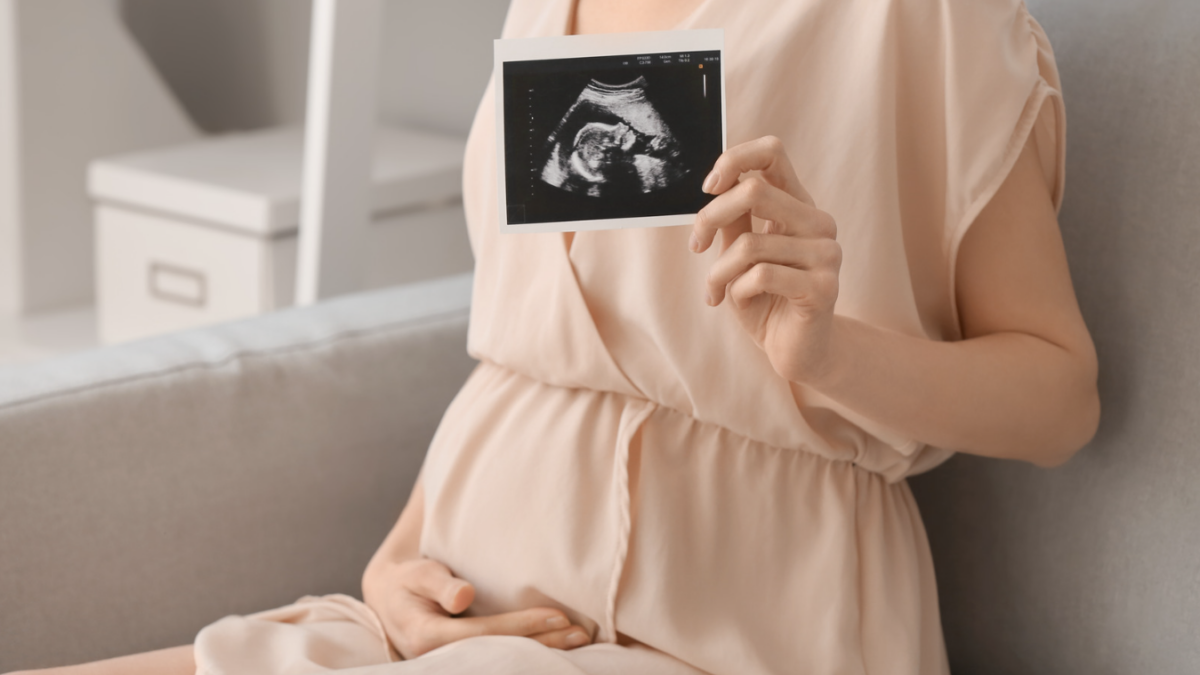
Sometimes it’s really easy for news stories to fit into the liberal narrative, and they gel like Michael Moore and the “Women’s March.” Other times, like when science and technology get in the way of, say, aborting babies guilt-free, it’s a bit tougher.
Still, you have to applaud this article in The Atlantic for trying. In a bizarre attempt at persuasion, the author contends that ultrasounds are a political tool because they reveal—wait for it—a heartbeat. In case you’re wondering why this is a problem since a heartbeat is proof of life, here’s why. It throws a wrench in the liberal’s favorite love story: science meets abortion.
Ultrasounds have been used for imaging developing babies in utero since the mid-1950s and become “routine in maternity clinics throughout the developed world” in the 1970s, according to a book on this topic. Most women have ultrasounds around the 20-week mark, and may have more throughout pregnancy depending on risk factors and medical advice.
Ultrasounds are “used to confirm a pregnancy, to identify the sex and number of fetuses and to detect fetal abnormalities such as microcephaly (an abnormally small head), absence of kidneys, and spinal problems.” Often the only thing detected at first via vaginal ultrasound is the whomp-whomp-whomp-whomp of the tiny baby’s heartbeat. It’s quick, it’s muffled, and for many moms-to-be, it’s glorious.
Apparently this was news to The Atlantic. Author Moira Weigel decries not just the mere existence of “heartbeat bills” like one conservative lawmakers attempted to pass in Ohio (which would have banned abortion near the gestational moment when a heartbeat can be detected) but the ultrasounds which enable said detection.
“These measures raise even more elementary questions: What is a fetal heartbeat? And why does it matter?” she asks. Those two questions alone cast doubt on her credibility and any real scientific or political point she is bumbling around trying to make. Imagine if, upon analyzing right-to-die issues, a pundit examined the hypothetical patient suffering from severe brain injuries following a car accident, and said, “What are brain waves and why do they matter?”
Weigel pushes her point further, “Doctors do not even call this rapidly dividing cell mass a ‘fetus’ until nine weeks into pregnancy.* Yet, the current debate shows how effectively politicians have used visual technology to redefine what counts as ‘life.’” Why, then, did my doctor inform me during my second pregnancy that my body was miscarrying around that same timeframe, if a “fetus” is simply a “cell mass?” Seems like that was a wasted phone call, as was the bloody death and grief that ensued.
Ultrasounds Matter. That’s the Problem
I’ll give Weigel some credit: Although much of her piece was a messy, riddled-with-errors conglomerate of progressive complaints (corrected as the day progressed yesterday) cloaked in a cheesecloth-thin thesis of science, she does admit it’s not the ultrasounds that bother her but how conservatives use them, successfully, as a weapon against abortion.
Weigel spends several paragraphs describing an older documentary about abortion called “The Silent Scream.” She implies that although a doctor in the documentary stresses how ultrasounds “have convinced” doctors “beyond question that the unborn child is simply another human being, another member of the human community indistinguishable from you or me” and legislation follows the effects of ultrasounds, this is somehow unscientific and even unfair.
“Their sponsors act as if ultrasound images ‘prove’ that a fetus is equivalent to a ‘baby,’ and that pregnant women only have to be shown ultrasound images in order to draw the same conclusion,” she says. “But the ‘heartbeat’ made visible via ultrasound does not actually demonstrate any decisive change of state in the cell mass that might become a fetus.”
She writes that legislation like the “heartbeat” bills “are based on two assumptions: First, that an ultrasound image has an obvious meaning. Second, that any pregnant woman who sees an ultrasound will recognize this meaning. Science does not bear either assumption out.”
Whatever Happened to ‘Science Says’
Indeed, abortion would be so much more morally acceptable without pesky ultrasounds detecting heartbeats that make moms think they aren’t carrying a “fetus” but a “baby.” That aside, this thesis is also not supported by science. Doctors, like other regular people, are imperfect and biased, but many unequivocally state when life begins. Ashley Montague, a geneticist and professor at Harvard and Rutgers universities, isn’t pro-life, but he still affirms, “The basic fact is simple: life begins not at birth, but conception.”
Doctors also know the value of ultrasounds. Although Dr. Stuart Campbell performed abortions for years, after he saw vivid 3-D ultrasound images, that was it for him: “Even a fetus lying there dead doesn’t convey the horror that one experiences seeing a baby moving its arms and legs, opening its mouth, sucking its thumb, and then thinking, gosh, somebody wants to, you know… It looks so vital. It has changed my view. I don’t think there’s any doubt about that.”
Dr. Joseph Randall, another former abortion provider, testified at a conference: “The greatest thing that got to us was the ultrasound. At that time, the ultrasound, or soundwave picture which was moving, called a ‘real-time ultrasound,’ showed the baby on TV. The baby really came alive on TV and was moving. And that picture, that picture of the baby on ultrasound bothered me more than anything else[.] … We lost two nurses. They couldn’t take looking[.] Women get those pictures even if they are still pictures, and boy, it’s their baby and they put it up on walls, they bring it in to show it to me, and they don’t even know what’s there, but they see head, arm, leg all typed out for them so they know what it is, but they know it’s a baby.”
If ultrasounds weren’t an effective method in identifying a fetus with a heartbeat who now proves more like a baby than ever before, would The Atlantic have bothered with such a sloppy but fervent hit piece? Nevertheless, Weigel concludes that a slowdown in the abortion rate has little to do with ultrasounds changing women’s minds and more to do with the low birth rate in general.
I’m sure the incremental closings of abortion clinics nationwide, the increase in clinics that care for moms and babies, and the explosion of 3D and 4D ultrasound machines in said clinics are unrelated to the drop in abortion. Surely clinics that address mom’s health-care concerns and the safety of her unborn baby, as well as legislation that does the same, are just more conservative ploys to…save babies and protect moms from emotional duress?
In that case, if the ultrasound machine is a weapon, may we draw that sword more often.









